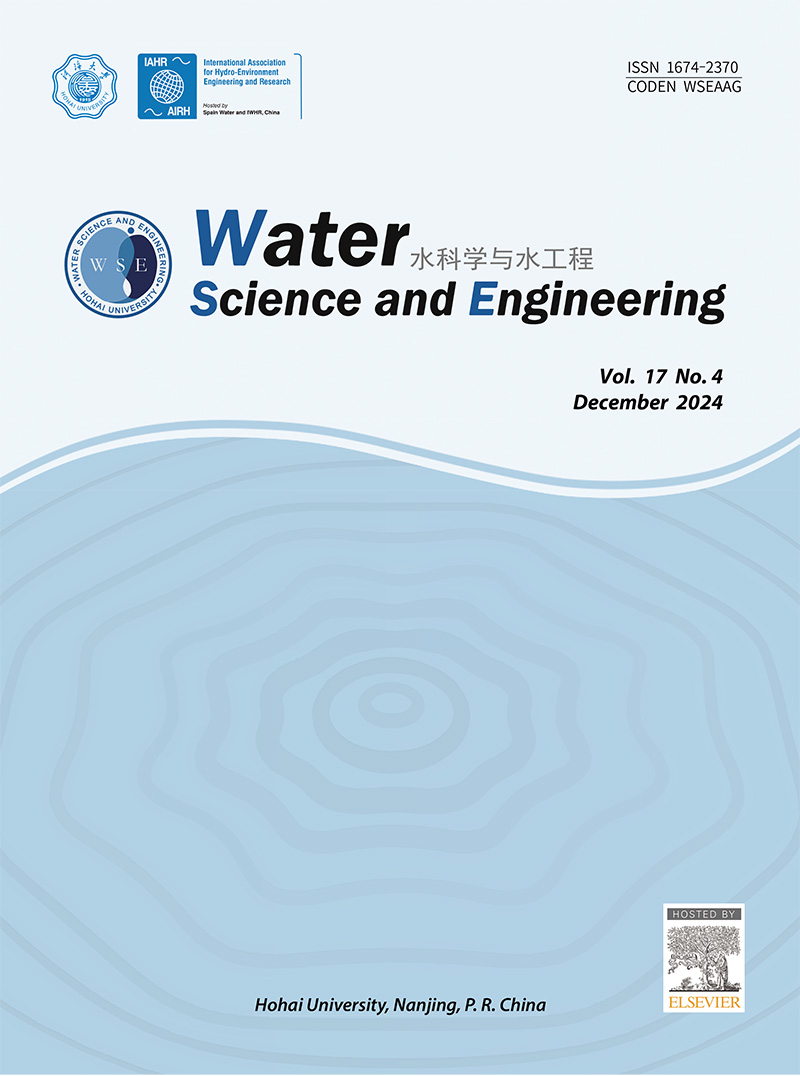A novel method for measuring interaction among multiple objectives in reservoir operation using niche theory
IF 4.3
Q1 WATER RESOURCES
引用次数: 0
Abstract
Accurate capture and presentation of the interactive feedback relationships among various objectives in multi-objective reservoir operation is essential for maximizing operational benefits. In this study, the niche theory of ecology was innovatively applied to the field of reservoir operation, and a novel state–relationship (S–R) measurement analysis method was developed for multi-objective reservoir operation. This method enables the study of interaction among multiple objectives. This method was used to investigate the relationship among the objectives of power generation, water supply, and ecological protection for cascade reservoir operation in the Wujiang River Basin in China. The results indicated that the ecological protection objective was the most competitive in acquiring and capturing resources like flow and water level, while the water supply objective was the weakest. Power generation competed most strongly with ecological protection and relatively weakly with water supply. These findings facilitate decision-making throughout the reservoir operation process in the region. The S–R method based on the niche theory is convenient, efficient, and intuitive, allowing for the quantification of feedback relationships among objectives without requiring the solution of the Pareto frontier of a multi-objective problem in advance. This method provides a novel and feasible idea for studying multi-objective interactions.
利用生态位理论,提出了一种测量油藏作业中多目标相互作用的新方法
在水库多目标运行中,准确捕捉和表达各目标之间的交互反馈关系是实现效益最大化的关键。创新性地将生态位理论应用于水库运行领域,提出了一种新的多目标水库运行状态关系(S-R)测度分析方法。该方法可以研究多目标间的相互作用。采用该方法对吴江流域梯级水库发电、供水和生态保护目标之间的关系进行了研究。结果表明:生态保护目标在获取和捕获流量、水位等资源方面最具竞争力,供水目标在获取和捕获资源方面最弱;发电与生态保护的竞争最激烈,与供水的竞争相对较弱。这些发现有助于该地区整个水库运行过程的决策。基于小生境理论的S-R方法方便、高效、直观,无需事先求解多目标问题的Pareto边界,即可量化目标间的反馈关系。该方法为研究多目标相互作用提供了一种新颖可行的思路。
本文章由计算机程序翻译,如有差异,请以英文原文为准。
求助全文
约1分钟内获得全文
求助全文
来源期刊

Water science and engineering
WATER RESOURCES-
CiteScore
6.60
自引率
5.00%
发文量
573
审稿时长
50 weeks
期刊介绍:
Water Science and Engineering journal is an international, peer-reviewed research publication covering new concepts, theories, methods, and techniques related to water issues. The journal aims to publish research that helps advance the theoretical and practical understanding of water resources, aquatic environment, aquatic ecology, and water engineering, with emphases placed on the innovation and applicability of science and technology in large-scale hydropower project construction, large river and lake regulation, inter-basin water transfer, hydroelectric energy development, ecological restoration, the development of new materials, and sustainable utilization of water resources.
 求助内容:
求助内容: 应助结果提醒方式:
应助结果提醒方式:


